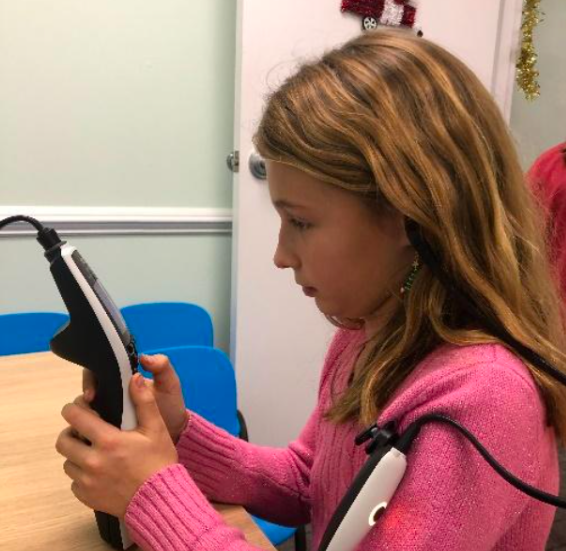Testing Your Child’s Hearing and Ear Function
One question often asked is “How are you going to test my child’s hearing? They can’t sit and raise their hand when they hear the sounds!” Luckily, we have different methods for testing young children’s hearing. These methods can make a hearing test fun for them too! Several measures can be used to test hearing and ear function. Some of these measures give us objective results about the status of the ear and hearing, while others are subjective, behavioral measures of hearing.
Behavioral Testing
Once a child is old enough, they can begin to show us what they can hear. These tests give information about hearing in each ear across different pitches. The goal of these tests is to find out what the quietest sounds your child can hear at these different pitches. These are also called hearing “thresholds.” The ages listed for each test are not a strict rule, but testing done will be dependent on your child’s development and a combination of methods could be used.
Visual Reinforcement Audiometry
Visual Reinforcement Audiometry (VRA) can be done starting when your child is developmentally 6 months old until they are about 3 years of age. During VRA, sounds are presented to your child either through headphones or a loudspeaker. Your child responds by looking toward the sound. This response is encouraged by lighting up an animated toy, when your child looks to the sound.
Conditioned Play Audiometry
Conditioned Play Audiometry (CPA) can be done starting when your child is developmentally 2.5 years old until they are about 5 years old. During CPA, sounds are presented to your child through headphones. Your child performs a game-like activity when the sound is heard. For example, every time a sound is played, your child gets to drop a block in a bucket.
Tympanometry
Tympanometry tests the function of the middle ear. It measures how well the eardrum moves by changing the pressure within the ear. To measure this, a small, rubber earphone is put in the ear to seal it. Once the tip is placed, the pressure changes in the ear, and the measurement is made. The results change based on the status of one's eardrum, middle ear bones, or middle ear space.
Otoacoustic emissions (OAEs)
OAEs test the function of a type of hair cell in the cochlea. A small rubber earphone is placed in the ear, and different sounds are played. Our hair cells, if working, will send an “echo” of the sounds back out of the ear. The earphone placed in the ear measures these “echoes.” Absent OAEs can indicate a problem in the middle or inner ear. OAEs are typically used to screen the hearing of newborns and infants. They can also be used when behavioral testing is not possible yet.




